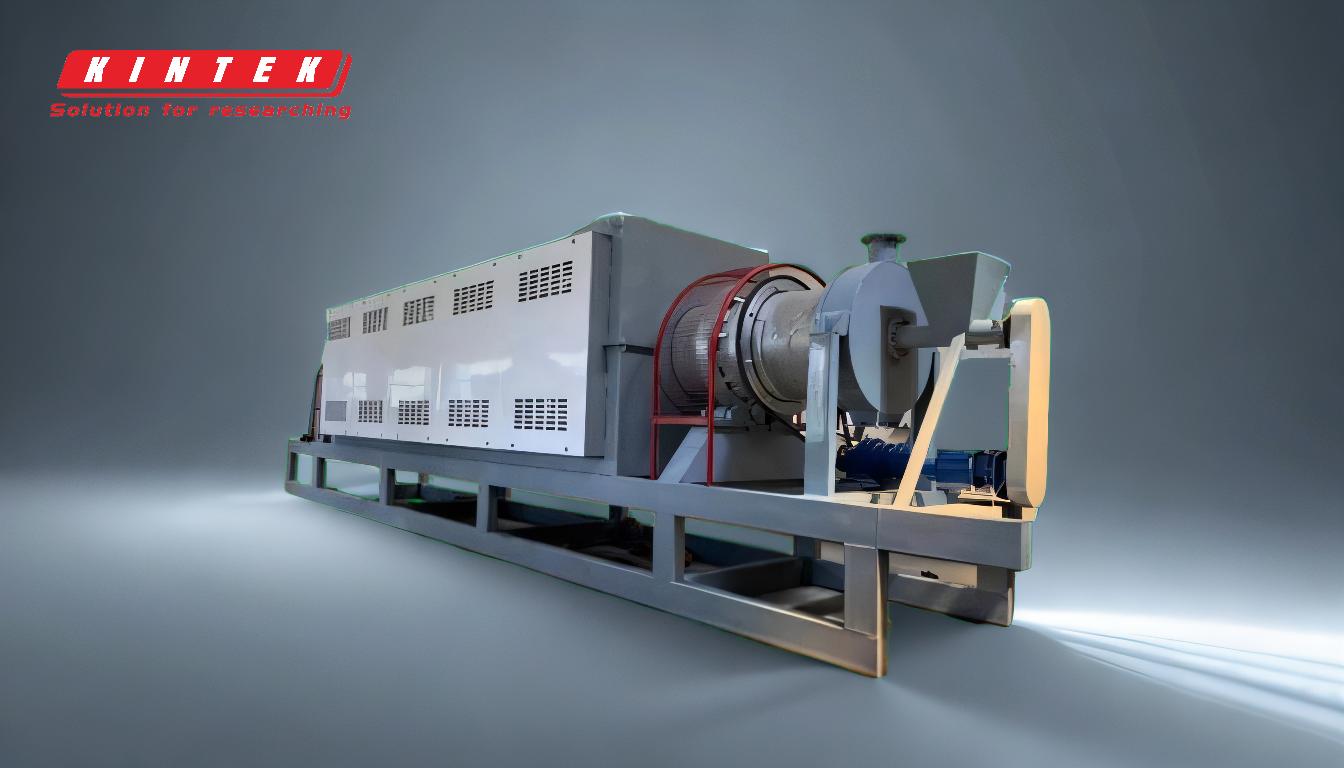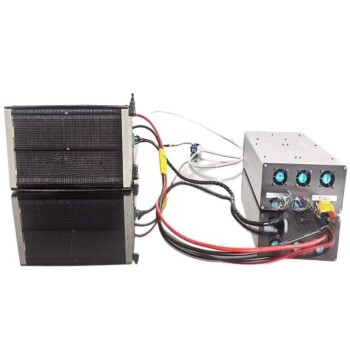Pyrolysis is a thermochemical process that decomposes organic materials at high temperatures in the absence of oxygen, breaking them down into smaller molecules such as gases, liquids, and solids. While it is often referred to as a recycling method, particularly for plastics, its classification as recycling depends on the definition of recycling and the end use of the products. Pyrolysis converts waste materials like plastics and tires into usable products such as fuel, oil, and char, which can replace virgin materials or fossil fuels. However, it differs from traditional mechanical recycling, as it chemically alters the material rather than preserving its original form. The process reduces waste and generates valuable outputs, but it is energy-intensive and requires careful management to ensure environmental and economic viability.
Key Points Explained:

-
Definition of Pyrolysis:
- Pyrolysis is a thermochemical process that involves heating organic materials (such as plastics, tires, or biomass) at high temperatures in the absence of oxygen.
- The process breaks down long-chain molecules into smaller molecules, producing gases (syngas), liquids (bio-oil or pyrolysis oil), and solids (bio-char or carbon black).
-
How Pyrolysis Works:
- Materials are fed into a pyrolysis reactor, where they are heated to temperatures typically ranging from 300°C to 900°C.
- In the absence of oxygen, the materials decompose into smaller molecules without combustion.
- The outputs include:
- Liquids: Pyrolysis oil, which can be used as fuel or further refined.
- Gases: Syngas, which can be used for energy generation.
- Solids: Char or carbon black, which can be used as a soil amendment or in industrial applications.
-
Pyrolysis as a Recycling Method:
- Pyrolysis is often marketed as a recycling method, particularly for plastics, because it converts waste into usable products.
- It is considered a form of chemical recycling, as it chemically alters the material rather than mechanically recycling it into its original form.
- For example, pyrolysis can convert plastic waste into pyrolysis oil, which can replace fossil fuels in industrial processes.
-
Comparison to Traditional Recycling:
- Mechanical Recycling: Involves physically processing materials (e.g., melting and reshaping plastics) to create new products without altering their chemical structure.
- Pyrolysis: Chemically breaks down materials into their constituent molecules, producing entirely new products (e.g., oil, gas, char).
- Pyrolysis is particularly useful for materials that are difficult to recycle mechanically, such as mixed or contaminated plastics.
-
Advantages of Pyrolysis:
- Waste Reduction: Converts non-recyclable waste into valuable products, reducing landfill use.
- Resource Recovery: Produces fuels and chemicals that can replace virgin materials or fossil fuels.
- Versatility: Can process a wide range of materials, including plastics, tires, biomass, and hazardous waste.
-
Limitations of Pyrolysis:
- Energy-Intensive: Requires significant energy input to maintain high temperatures.
- Environmental Concerns: Emissions and byproducts must be carefully managed to avoid pollution.
- Economic Viability: High capital and operational costs can make pyrolysis less competitive compared to other recycling methods.
-
Is Pyrolysis Truly Recycling?:
- The classification of pyrolysis as recycling depends on the definition of recycling. If recycling is defined as converting waste into new materials or products, then pyrolysis qualifies.
- However, if recycling is strictly defined as preserving the original material's form and properties (as in mechanical recycling), then pyrolysis may not fully meet this criterion.
- Pyrolysis is better described as a waste-to-energy or waste-to-resource process, as it transforms waste into usable energy or chemical feedstocks.
-
Applications of Pyrolysis:
- Plastic Waste: Converts plastic into pyrolysis oil, which can be used as fuel or further refined into chemicals.
- Tire Recycling: Produces carbon black, oil, and gas from waste tires.
- Biomass Conversion: Generates bio-oil, syngas, and bio-char from agricultural or forestry waste.
- Hazardous Waste Treatment: Safely breaks down hazardous materials into less harmful products.
-
Future of Pyrolysis in Recycling:
- Pyrolysis has the potential to play a significant role in addressing plastic pollution and reducing reliance on fossil fuels.
- Advances in technology and process optimization could improve efficiency, reduce costs, and minimize environmental impacts.
- However, its success will depend on regulatory support, market demand for pyrolysis products, and public acceptance.
In conclusion, pyrolysis is a valuable tool for managing waste and recovering resources, but its classification as recycling depends on the context and definition used. It complements traditional recycling methods by processing materials that are otherwise difficult to recycle, contributing to a circular economy.
Summary Table:
| Aspect | Details |
|---|---|
| Definition | Thermochemical process breaking down organic materials without oxygen. |
| Outputs | Gases (syngas), liquids (pyrolysis oil), solids (char). |
| Recycling Type | Chemical recycling, converting waste into new products. |
| Advantages | Waste reduction, resource recovery, versatility. |
| Limitations | Energy-intensive, environmental concerns, high costs. |
| Applications | Plastic waste, tire recycling, biomass conversion, hazardous waste treatment. |
| Future Potential | Addresses plastic pollution, reduces fossil fuel reliance. |
Discover how pyrolysis can revolutionize waste management—contact our experts today to learn more!









